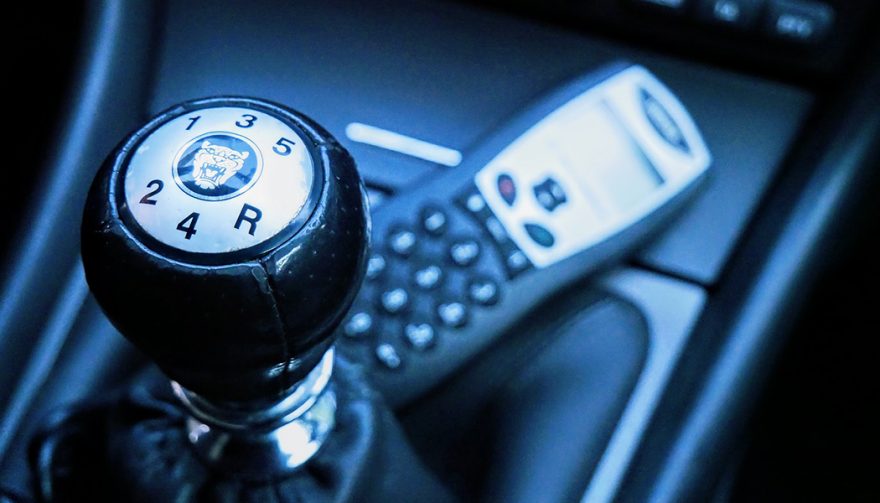
How does the raw visceral thrill of grabbing gears yourself compete with the we've got you covered automatic?
Manual vs Automatic Transmission – Bio Feedback or Algorithms?
For nearly 70 years there has been an argument over which type of gearbox, the manual vs automatic transmission, was the better way to get the best performance out of a vehicle. For all that time it was up to the consumer to make that decision. Today, that decision is being made more and more by manufacturers. More on that later. If you have ever owned a car or truck with a stick then you know the satisfaction that comes with popping the clutch or slamming the tranny into a lower gear, It’s a thrill.
But if you face a daily hour-long commute in gridlock or stop and go traffic, shifting every 30 to 60 seconds, or riding the clutch until your left leg aches, can be a drag. A manual transmission is satisfyingly interactive. However, there are times when you wish autonomous technology would hurry up and get here.
Automatics have their advantages as well. For new drivers, an automatic transmission is an obvious choice. Decades ago, learning how to drive a stick was a rite of passage. Newbies went through several buck-a-roo sessions trying to match clutch and gas before they could safely take the car on the road. Safety is the other obvious advantage. Drivers can keep both hands on the wheel. You aren’t distracted by the requirement to physically shift gears. Lastly, automatics allowed the development of adaptive cruise control, automatic braking, accident avoidance systems and other semi-autonomous technology. So what are the differences with a manual vs automatic transmission?
The Very Short Technical Explanation
Both styles of transmissions have the same basic mission. Optimize/control the torque generated by the engine that is applied to the axle(s). That’s accomplished by connecting the engine (power source) to the input shaft. The speed of that shaft depends on what gear it is in, That speed is transferred to an output shaft that sends the power to the wheels.
Along those shafts are a series of gears that can optimize the energy output and speed up or slow down the speed of the output shaft. Think back to the rear sprocket on your first five-speed bicycle. The chain was both the input and output shaft and the collection of cogs were the gears. On the handlebar was a gear selector and if you didn’t go into “glide” when you changed gears, the chain could slip off the sprocket and you’d spend the rest of the day trying to fix it.
With a manual transmission, going into “glide” or changing gears, is accomplished with a clutch. The clutch disengages from the engine, allowing for manual movement of the gears’ alignment (shift) and then reengages with the engine. With an automatic, that engagement/re-engagement function is accomplished with a component known as a torque converter.
By contrast, a manual transmission, your brain (wetware) and left leg determine when to shift. With an automatic, software programming makes that decision and all you have to do is point the car.
Pros and Cons of a Manual Transmissions
Automatics are without question, far more popular than stick shifts. You’ll typically find manual transmissions as standard equipment in the base trim of a car or SUV. One win for the manual in the manual vs automatic transmission battle is that they are cheaper than automatics and keep the advertised price down. However, most people will opt for the more expensive automatic meaning the number of stick shifts on the street is constantly decreasing. Conversely, drivers who are into the joy of driving (on-road or off-road) want the control that only a stick provides. That’s why sport cars and most off-road vehicles will come with a clutch. But even in these markets, manufacturers are coming up with technological advances that provide more reasons why their automatic transmissions are smarter than your brain.
But for now…here are a few of the pros and cons of a stick tranny:
- Sticks are comparatively simple designs and require less maintenance than an automatic and are far less expensive to repair or replace.
- Because you effect the shifting, you have more control over the responsiveness of acceleration or deceleration. You also get better gas mileage in the real world, though not always on the window sticker.
- Because they are not as popular as automatics, manual gearbox cars are less likely to be stolen. Unless they are in the cockpit of a sports car or 4×4 truck.
- If you don’t know how to drive a stick. It takes a bit of time training before you hit the open road. Decades ago this wasn’t a problem. There was always an empty parking lot on Sundays. Today it’s tough to find a practice driving area with little traffic.
- If you routinely travel in stop and go, high traffic conditions, constantly depressing the clutch and shifting can become annoying.
- Lastly, reselling your car will be more difficult because of the smaller number of people who know how to drive it.
Pros and Cons of Automatics
As we have already covered, the biggest advantage of an automatic in the manual vs automatic transmission battle is the ability to get in and go without any special knowledge or skill required to shift gears. But more importantly, advances like torque vectoring, the myriad collection of driver assistance and safety technologies, not to mention “anyone can do it” launch control would not be possible without an automatic transmission.
And now, even high-performance brands are replacing manual transmissions with automatics that are “smarter” than the driver and can more efficiently manage performance. Frequently, shift paddles are installed on the wheel. So the driver can play like he or she was really controlling events.
Automatics will continue to dominate the market but they do have some areas that need improvement:
- Compared to manual transmissions, they are expensive and drive the price of a vehicle up.
- Automatics are heavier, run hotter, and despite claims, are less efficient. This means they often do not get the mpg that a stick delivers on the road.
- Because they are so complex, they are expensive to repair. Owners are almost locked into getting their cars serviced at a dealer. This is particularly true of CVTs.
- Automatics rely on the torque converter to shift gears. Frequent complaints include the torque converter’s reluctance to downshift in a timely manner. Shifting is up to the software design, not the driver’s desires.
So there you have it. We’re sure we haven’t changed any minds but hope we have given you some food for thought when it comes to the manual vs automatic transmission.






